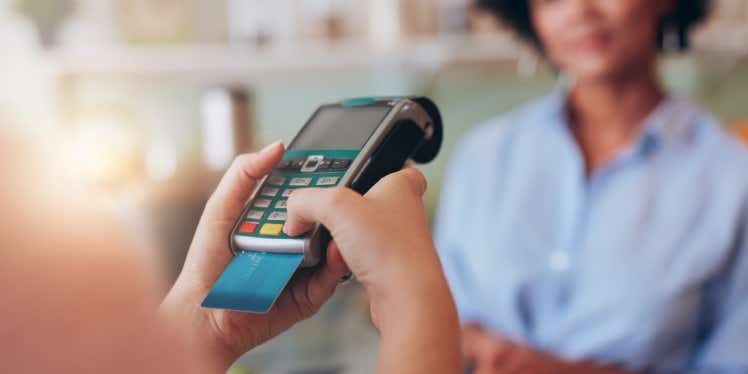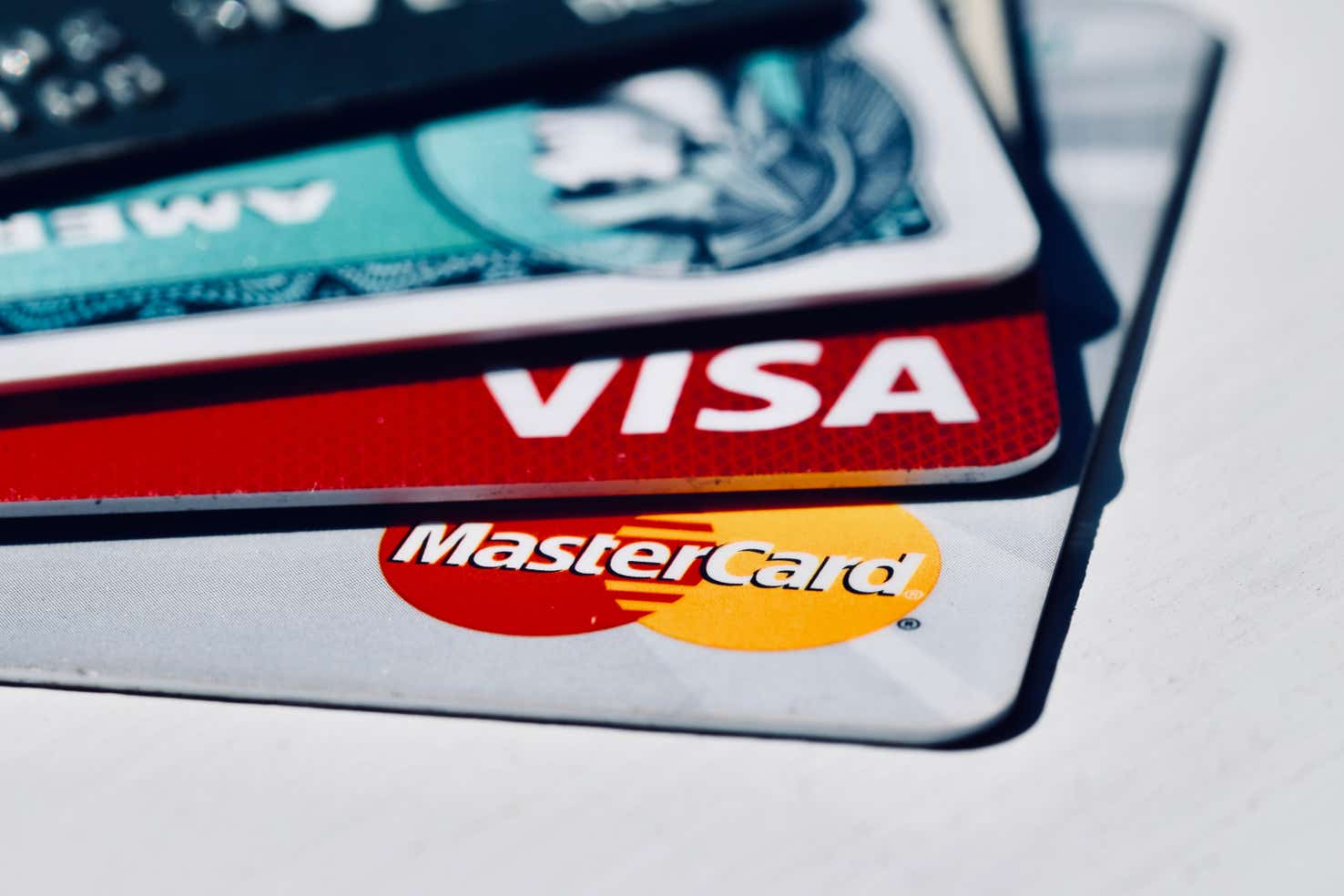- >
- Credit Cards>
- Balance transfer & purchases credit cards
Compare balance transfer and purchases credit cards
Get balance transfers and purchases in a single card

Compare balance transfer and purchase credit cards with our partner Uswitch

What are 0% balance and purchase credit cards?
There might be times when you need to pay off debt and also make a large purchase. You might feel torn about what to do, given that you should only apply for one credit card at a time.
Luckily, you can carry out both types of transactions on one card. These cards are often known as 'combo cards' or 'dual cards' where you essentially get the features of two types of cards in a single card - making purchases and doing a balance transfer.
Having a single credit card for transferring your existing balances and making purchases can simplify your finances. And the best part is that many cards offer 0% interest deals for both balance transfers and purchases, so you can save on interest whether you're making a purchase or paying down debt.
The interest-free period for balance transfers may differ from that for purchases. So be aware of when the 0% offer ends for each of those.”
Why get a balance transfer and purchases card?
Balance transfers and purchases are two different use cases for getting a credit card. But at times many people need the flexibility to do both and providers have responded by offering both functions in a single card.
Not only do you get access to both functions - balance transfers and purchases - you can simplify your finances by having one card. And you can rest assured that when you make a repayment, the higher interest debt is always paid off first.
However, the best part of these cards is that often you can get 0% interest deals on both balance transfers and purchases. So you're able to save on interest whether you're doing a balance transfer or making purchases.
How do balance transfer and purchase credit cards work?
Transfer your debt
Move any existing credit card balances across to a new credit card that charges a lower rate of interest or charges 0% interest for a number of months.
Pay the transfer fee
When transferring a credit card balance to a new card, you’ll usually pay a transfer fee of up to around 3% of the total card balance you transfer.
Save money
Because your new credit card charges a lower interest rate, or even no interest at all for a set time, you’ll save money and also pay off your credit card balance faster.
Interest-free spending
Clear your debt before interest kicks in
Our best balance transfer and purchase credit card deals
Our editors have picked out some of our best combo card deals.
With this card, Barclays offers a competitive up to 21 months interest-free on purchases. Plus, you also get up to 20 months of 0% interest on balance transfers, for a 3.45% transfer fee.”

Representative example: The standard interest rate on purchases is 24.9% p.a. (variable), so if you borrow £1,200 the Representative APR will be 24.9% (variable).
We are classed as a credit broker for consumer credit, not a lender.
How to compare balance transfer and purchase credit cards
Interest free period
With a combo card, you'll need to look at the 0% period for both balance transfers and purchases because you typically don't get the same period for both.
On some cards the interest-free period for balance transfers might be longer, on others you might get a longer one for purchases.
You'll have to prioritise what you'll need more time for and choose a card accordingly.
APR
This is also known as the revert rate, or the interest rate you’ll be charged once the 0% interest period ends.
With a combo balance transfer and purchases credit card, you might find that the interest rate for a balance transfer is different from that for making purchases. So make sure you consider both when picking a card.
Fees
Most cards charge fees for different kinds of transactions. For example foreign transaction fees for using the card abroad. Or cash advance fees for withdrawing cash from an ATM. If you’re unlikely to use your card for any of these, then it shouldn’t matter.
With combo cards, you'll likely have to pay a balance transfer fee. These can range between 1% to 5% of the transfer amount.
How eligibility tools works
An eligibility tool matches you with the credit cards you're likely to get based on your needs and circumstances. It does that by asking you a few simple questions about your circumstances and then uses a 'soft search' credit check to see what deals you’re likely to be accepted for.
This ensures that your credit score is not affected, which is why it's a good idea for most people to use an eligibility tool, like that used by our partners at Uswitch.
This way you only apply for the card you can get, and avoid hurting your credit score by putting in applications that are later rejected.
An eligibility tool is a quick and low risk way to ensure you only apply for a card you're likely to be accepted for."

Compare balance transfer and purchase credit cards with our partner Uswitch

Expert tips for balance transfer and purchase cards
Check your eligibility. Once you've found a card you want, it makes sense to check you'll be accepted. Eligibility tools won't hurt your credit score and can let you see how likely you are to be accepted before you apply.
Try to pay more than the minimum repayment. For any purchases you make on your credit card, you are required to pay at least the minimum monthly repayment. However, minimum repayments are set at very low levels, so if you only pay this amount, you won't be able to repay your full balance before the 0% offer period ends. You’ll end up being charged the revert rate on the balance, which is much higher, meaning you’ll pay a lot more in interest and it will take a long time to clear your debt.
Take advantage of the entire offer period. The 0% offer is available as soon as your card is approved, not from when you make your first purchase or do a transfer. Make sure you carry out these transactions as soon as you get your credit card, and start making repayments to make the most of the interest-free period.
Avoid withdrawing cash. Not all credit card transactions are equal - in fact a whole string of them cost you more. These are known as cash advances, or cash like transactions, and you will be charged interest from the second you make the transaction, quite possibly at a higher APR than normal. You could also be charged a fee on top.
Balance transfer and purchase credit card FAQs
Does my credit record matter?
Yes, looking at your credit record helps lenders decide whether to accept you as well as what APR and credit limit they offer you.
What will my credit limit be?
Your provider will confirm your credit limit after they approve your application. Here is how credit limits work and how much it costs if you exceed them.
How long will it take to make a balance transfer?
It might only be a few days before you get your new credit card, but might take up to two weeks. It will then take up to another week to make the balance transfer.
Can I do a balance transfer with a 0% purchase card?
No, you can't do a balance transfer unless it is to a combined balance transfer and purchases card. If you do this, you can transfer what you owe on a credit card to a new deal with a better interest rate.
How long does the 0% period last?
The interest-free period depends on the type of card and the 0% period you've been approved for. For balance transfers, it can last up to around 30 months or more on the best deals. For purchases, the longest 0% period could be 21 months or more. And for money transfers, 12 months is possible.
However, the longest interest-free periods are typically offered to those with good credit scores and higher incomes.
Balance transfer and purchase card jargon buster
APR
APR stands for “Annual Percentage Rate” and is the total cost of borrowing over 12 months. For example, if your APR is 20%, you will be charged 20p for every £1 borrowed over the course of 12 months. If you pay your balance in full and on time, you will not pay interest.
Credit limit
Your credit limit is the amount you can borrow on your credit card at any one time. If you exceed this amount, you can be charged a fee - typically £12 - and it can leave a mark on your credit report.
You won’t usually find out your credit limit until the end of an application process - although you can ask your provider to increase – or decrease – your credit limit at any time.
Credit limits are set based on your credit history and your earnings.
Once you've reached your credit limit, you need to make a payment to bring down your balance before you can use the card again. Find out more in our guide to credit limits.
Credit report
Your credit report is your history of borrowing and paying bills over the past few years. Lenders send this information to one or more of the three credit reference agencies, which compile reports on UK residents.
Before deciding whether to let someone borrow, lenders check your report from one or more of the agencies. You can request a copy of your credit reports to ensure there are no mistakes on your file, request changes if you spot one and add notes explaining any missed payments.
Credit score
Your credit score is calculated based on your credit history. Each credit reference agency has its own method of calculating this.
Your credit score will go up for things like making payments on time and down for things like being late or defaulting on a loan. Typically, the higher your score, the more likely you are to be offered a lower rate of interest or higher credit limit.
There is no absolute pass or fail mark attached to a credit score, with each lender making its own decision on what it considers acceptable.
Default
If you miss a few payments, generally between three and six, your credit card provider will send you a default notice, giving you at least 14 days to pay the amount stated on the notice.
Court action could be used to recover the debt, and if you fail to make the payment, your account will be “defaulted”, meaning you won’t be able to use your credit card anymore. It is possible that your provider may have already blocked spending on your account after the first couple of missed payments. A record of the default will also stay on your credit report for six years, making it harder to get any form of credit throughout this time.
Direct Debit
A Direct Debit is when you give a company permission to take payments automatically from your bank account. It decides the amount, but you are free to cancel the arrangement. For example, you can set up a Direct Debit to pay off your credit card. This could be for the minimum amount due, a fixed sum, or the entire balance.
Eligibility criteria
Minimum eligibility criteria define the attributes the provider expects customers to have before offering them a product. They’re designed to help customers understand if they should proceed with an application.
Meeting the minimum eligibility criteria is not a guarantee of approval. Eligibility criteria include factors such as age, salary and sometimes other details, depending on the product.
Interest-free credit
Interest-free credit cards allow you to either transfer a balance, make purchases or transfer cash to a current account without paying any interest on your balance for a set period. However, you must keep making at least the minimum monthly repayment during this time.
Once the 0% deal is over, you will be charged interest on any remaining debt at your standard APR. With balance transfers and money transfers, you will usually have to pay a transfer fee.
Introductory offer
Credit card introductory offers include bonus reward points, extra cashback, 0% on balance transfers or 0% on purchases.
Introductory offers are used to attract new customers, but once they expire, they revert to the standard offer or rate. When this happens, you should check if you’re still getting the best deal or whether you need to switch to a different credit card.
Minimum monthly repayment
Every credit card has a minimum monthly repayment amount set out in its rules, which you can find in the summary box.
The minimum payment is calculated by working out what interest you've built up over the past month and then adding a small percentage of your total balance. If you have a small overall balance, there might be a fixed sum instead - for example, £5.
As minimum monthly repayments are set at such low levels, it’s best to pay off more than this each month if you can. You’ll clear your debt faster and pay less interest too.
Didn’t find what you were looking for?
Below you can find a list of our most popular credit cards:
Hub of information!

Super accessible and easy to use

Very helpful











